
The Special Activities Center (SAC) is a division of the United States Central Intelligence Agency responsible for covert and paramilitary operations. The unit was named Special Activities Division (SAD) prior to 2015. Within SAC there are two separate groups: SAC/SOG for tactical paramilitary operations and SAC/PAG for covert political action.
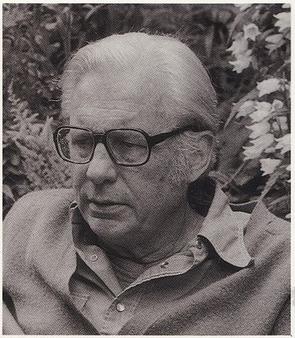
Miles Axe Copeland Jr. was an American musician, businessman, and Central Intelligence Agency (CIA) founding member best known for his relationship with Egyptian leader Gamal Abdel Nasser and his public commentary on intelligence matters. Copeland participated in numerous covert operations, including the March 1949 Syrian coup d'état and the 1953 Iranian coup d'état.
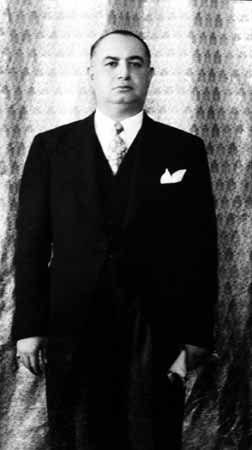
Husni al-Za'im was a Kurdish military officer and who was head of state of Syria in 1949. He had been an officer in the Ottoman Army. After France instituted its colonial mandate over Syria after the First World War, he became an officer in the French Army. After Syria's independence in 1946 he was made Chief of Staff, and was ordered to lead the Syrian Army into war with the Israeli Army in the 1948 Arab-Israeli War. The defeat of the Arab league forces in that war shook Syria and undermined confidence in the country's chaotic parliamentary democracy, allowing him to seize power in 1949. However, his reign as head of state was brief, he was tried and executed in August 1949 by his former coup co-conspirators. Al-Za'im infamously executed Lebanese intellectual Antoun Saadeh in July 1949.

Archibald Bulloch Roosevelt Jr., Archibald Bulloch Roosevelt the first grandson of U.S. President Theodore Roosevelt, was a soldier, scholar, polyglot, authority on the Middle East, and career CIA officer. He served as chief of the Central Intelligence Agency's stations in Istanbul, Madrid and London. Roosevelt had a speaking or reading knowledge of at least twenty languages.

The Central Intelligence Agency, known informally as the Agency and historically as the Company, is a civilian foreign intelligence service of the federal government of the United States, officially tasked with gathering, processing, and analyzing national security information from around the world, primarily through the use of human intelligence (HUMINT) and conducting covert action through its Directorate of Operations. As a principal member of the United States Intelligence Community (IC), the CIA reports to the Director of National Intelligence and is primarily focused on providing intelligence for the President and Cabinet of the United States. Following the dissolution of the Office of Strategic Services (OSS) at the end of World War II, President Harry S. Truman created the Central Intelligence Group under the direction of a Director of Central Intelligence by presidential directive on January 22, 1946, and this group was transformed into the Central Intelligence Agency by implementation of the National Security Act of 1947.

United States foreign policy in the Middle East has its roots in the early 19th-century Tripolitan War that occurred shortly after the 1776 establishment of the United States as an independent sovereign state, but became much more expansive in the aftermath of World War II. With the goal of preventing the Soviet Union from gaining influence in the region during the Cold War, American foreign policy saw the deliverance of extensive support in various forms to anti-communist and anti-Soviet regimes; among the top priorities for the U.S. with regards to this goal was its support for the State of Israel against its Soviet-backed neighbouring Arab countries during the peak of the Arab–Israeli conflict. The U.S. also came to replace the United Kingdom as the main security patron for Saudi Arabia as well as the other Arab states of the Persian Gulf in the 1960s and 1970s in order to ensure, among other goals, a stable flow of oil from the Persian Gulf. As of 2023, the U.S. has diplomatic relations with every country in the Middle East except for Iran, with whom relations were severed after the 1979 Islamic Revolution, and Syria, with whom relations were suspended in 2012 following the outbreak of the Syrian Civil War.
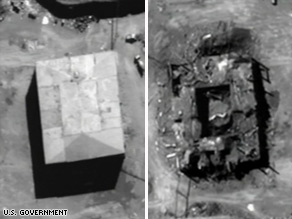
Operation Outside the Box, also known as Operation Orchard, was an Israeli airstrike on a suspected nuclear reactor, referred to as the Al Kibar site, in the Deir ez-Zor region of Syria, which occurred just after midnight on 6 September 2007. The Israeli and U.S. governments did not announce the secret raids for seven months. The White House and Central Intelligence Agency (CIA) subsequently confirmed that American intelligence had also indicated the site was a nuclear facility with a military purpose, though Syria denies this. A 2009 International Atomic Energy Agency (IAEA) investigation reported evidence of uranium and graphite and concluded that the site bore features resembling an undeclared nuclear reactor. IAEA was initially unable to confirm or deny the nature of the site because, according to IAEA, Syria failed to provide necessary cooperation with the IAEA investigation. Syria has disputed these claims. Nearly four years later, in April 2011 during the Syrian Civil War, the IAEA officially confirmed that the site was a nuclear reactor. Israel did not acknowledge the attack until 2018.
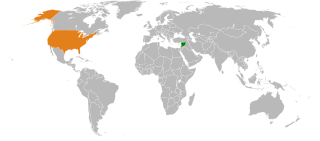
Diplomatic relations between Syria and the United States are currently non-existent; they were suspended in 2012 after the onset of the Syrian Civil War. Priority issues between the two states include the Arab–Israeli conflict, the Golan Heights annexation, Iraq War, alleged state-sponsorship of terrorism, occupation of Lebanon, etc.
The United States (U.S.) Central Intelligence Agency (CIA) has been involved in covert actions and contingency planning in Iraq ever since the 1958 overthrow of the Iraqi monarchy, although the historiography of Iraq–United States relations prior to the 1980s is considered relatively underdeveloped, with the first in-depth academic studies being published in the 2010s.
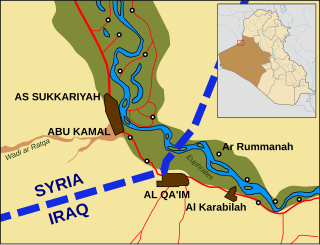
The 2008 Abu Kamal raid was an attack carried out by helicopter-borne CIA paramilitary officers from Special Activities Division and United States Special Operations Command, Joint Special Operations Command inside Syrian territory on October 26, 2008. The Syrian government called the event a "criminal and terrorist" attack on its sovereignty, alleging all of the reported eight fatalities were civilians. An unnamed U.S. military source, however, alleges that the target was a network of foreign fighters who planned to travel through Syria to join the Iraqi insurgency against the United States-led Coalition in Iraq and the Iraqi government.

The 1963 Syrian coup d'état, referred to by the Syrian government as the 8 March Revolution, was the successful seizure of power in Syria by the military committee of the Syrian Regional Branch of the Arab Socialist Ba'ath Party. The planning and the unfolding conspiracy was inspired by the Iraqi Regional Branch's successful military coup.

The Ramadan Revolution, also referred to as the 8 February Revolution and the February 1963 coup d'état in Iraq, was a military coup by the Ba'ath Party's Iraqi-wing which overthrew the Prime Minister of Iraq, Abd al-Karim Qasim in 1963. It took place between 8 and 10 February 1963. Qasim's former deputy, Abdul Salam Arif, who was not a Ba'athist, was given the largely ceremonial title of President, while prominent Ba'athist general Ahmed Hassan al-Bakr was named Prime Minister. The most powerful leader of the new government was the secretary general of the Iraqi Ba'ath Party, Ali Salih al-Sa'di, who controlled the National Guard militia and organized a massacre of hundreds—if not thousands—of suspected communists and other dissidents following the coup.
The March 1949 Syrian coup d'état was a bloodless coup d'état that took place on 30 March, and was the first military coup in modern Syrian history which overthrew the country's democratically elected government. It was led by the Syrian Army chief of staff, Husni al-Za'im, who became President of Syria on 11 April 1949. Among the officers that assisted al-Za'im's takeover were Sami al-Hinnawi and Adib al-Shishakli, both of whom in sequence would later also become military leaders of the country. The president, Shukri al-Quwatli, was accused of purchasing inferior arms for the Syrian Army and poor leadership. He was briefly imprisoned, but then released into exile in Egypt. Syria's legislature, then called the House of Representatives, was dissolved. al-Za'im also imprisoned many political leaders, such as Munir al-Ajlani, whom he accused of conspiring to overthrow the republic.
James Hugh Keeley Jr. was an American diplomat.

Foreign involvement in the Syrian civil war refers to political, military and operational support to parties involved in the ongoing conflict in Syria that began in March 2011, as well as active foreign involvement. Most parties involved in the war in Syria receive various types of support from foreign countries and entities based outside Syria. The ongoing conflict in Syria is widely described as a series of overlapping proxy wars between the regional and world powers, primarily between the United States and Russia as well as between Iran and Saudi Arabia.
Since the 19th century, the United States government has participated and interfered, both overtly and covertly, in the replacement of many foreign governments. In the latter half of the 19th century, the U.S. government initiated actions for regime change mainly in Latin America and the southwest Pacific, including the Spanish–American and Philippine–American wars. At the onset of the 20th century, the United States shaped or installed governments in many countries around the world, including neighbors Hawaii, Panama, Honduras, Nicaragua, Mexico, Haiti, and the Dominican Republic.
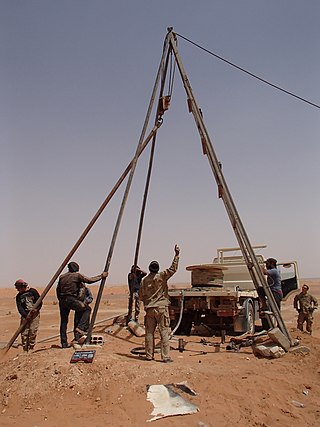
The Syrian Train and Equip Program is a United States-led military operation launched in 2014 that identified and trained selected Syrian opposition forces inside Syria as well as in Turkey and other US-allied states who would then return to Syria to fight the Islamic State of Iraq and the Levant. The program reportedly cost the US $500 million. It is a covert program, run by U.S. special operations forces, separate from Timber Sycamore, the parallel covert program run by the Central Intelligence Agency (CIA). As of July 2015, only a group of 54 trained and equipped fighters had been reported to have been deployed, which was quickly routed by al-Nusra, and a further 75 were reported in September 2015.
Saudi Arabia's involvement in the Syrian Civil War involved the large-scale supply of weapons and ammunition to various rebel groups in Syria during the Syrian Civil War.
Project FF or Fat Fucker was a Central Intelligence Agency (CIA) project aimed at pressuring King Farouk of Egypt to make political reforms that would lessen the likelihood of violent political change in the country contrary to American interests. The government of the United States was concerned that the ever-increasing political instability in Egypt, much of it linked to the perceived corruption and incompetence of both the royal court and the traditional political establishment, would inevitably result in the toppling of the Egyptian government if not remedied. In particular, they feared the prospect of a partial or full communist takeover. The project was masterminded by CIA Director Allen Dulles, Secretary of State Dean Acheson, CIA operative Kermit "Kim" Roosevelt Jr., and CIA Station Chief in Cairo Miles Copeland, Jr.

Timber Sycamore was a classified weapons supply and training program run by the United States Central Intelligence Agency (CIA) and supported by some Arab intelligence services, including Saudi intelligence. Launched in 2012 or 2013, it supplied money, weaponry and training to Syrian opposition militias of the Free Syrian Army fighting Syrian president Bashar al-Assad in the Syrian civil war. According to US officials, the program was run by the CIA's Special Activities Division and has trained thousands of rebels. President Barack Obama secretly authorized the CIA to begin arming Syria's embattled rebels in 2013. The program became public knowledge in mid-2016.














